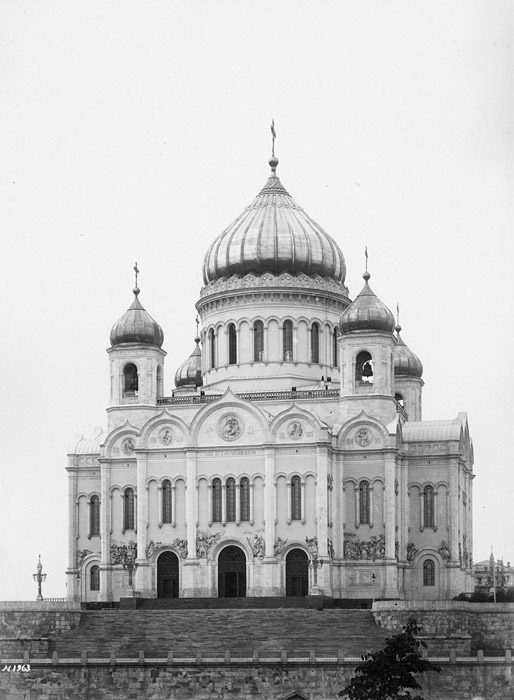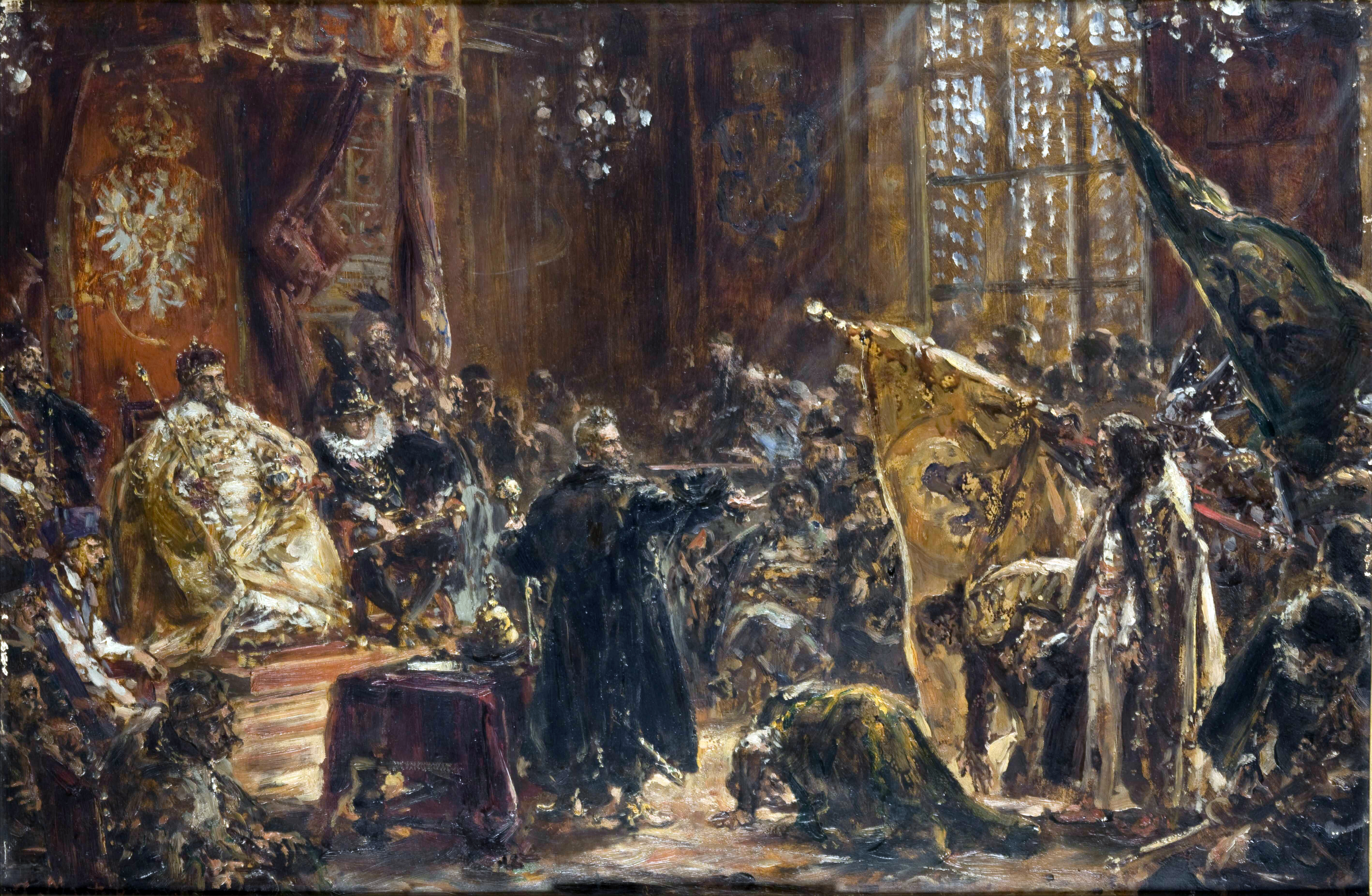|
Bolkhov
Bolkhov (russian: Бо́лхов) is a town and the administrative center of Bolkhovsky District in Oryol Oblast, Russia, located on the Nugr River (Oka's tributary), from Oryol, the administrative center of the oblast. Population: 12,800 (1969); 20,703 (1897). History Bolkhov was first documented in a chronicle from 1196.Official website of Bolkhovsky DistrictУездный город Болхов After the Mongol invasion of Rus', it became the seat of a local princely dynasty, whose descendants may be traced until the 19th century. In the 16th century, it became one of the fortified posts for defending Moscow from the Tatars on the south. It was there that the army of Vasily IV was defeated by False Dmitry II in 1608. During World War II, Bolkhov was occupied by the German Army from October 9, 1941 to July 28, 1943. Administrative and municipal status Within the framework of administrative divisions, Bolkhov serves as the administrative center of Bolkho ... [...More Info...] [...Related Items...] OR: [Wikipedia] [Google] [Baidu] |
Bolkhovsky District
Bolkhovsky District (russian: Бо́лховский райо́н) is an administrativeLaw #522-OZ and municipalLaw #464-OZ district (raion), one of the twenty-four in Oryol Oblast, Russia. It is located in the north of the oblast. The area of the district is . Its administrative center is the town of Bolkhov. Population: 18,041 ( 2010 Census); The population of Bolkhov accounts for 63.3% of the district's total population. Notable residents *Yevgeni Preobrazhensky Yevgeni Alekseyevich Preobrazhensky ( rus, Евге́ний Алексе́евич Преображе́нский, p=jɪvˈɡʲenʲɪj ɐlʲɪˈksʲejɪvʲɪt͡ɕ prʲɪəbrɐˈʐɛnskʲɪj; 1886–1937) was a Russian revolutionary, Soviet economi ... (1886–1937), revolutionary, economist and sociologist, born in Bolkhov * Ilya Starinov (1900–2000), military officer, noted Soviet saboteur, born in the village of Voynovo References Notes Sources * * {{Use mdy dates, date=October 2012 Districts of Oryol Ob ... [...More Info...] [...Related Items...] OR: [Wikipedia] [Google] [Baidu] |
Oryol Oblast
Oryol Oblast (russian: Орло́вская о́бласть, ''Orlovskaya oblast''), also known as Orlovshchina (russian: Орловщина) is a federal subjects of Russia, federal subject of Russia (an oblast). Its administrative center is the types of inhabited localities in Russia, city of Oryol. Population: 714,094 (Estimate 2022) (Russian Census (2010), 2010 Census — 786,935). Geography It is located in the southwestern part of the Central Federal District, in the Central Russian Upland. In terms of area, at it is one of the smallest federal subjects. From north to south, it extends for more than , and from west to east—for over . Kaluga Oblast border it to the north-west; Tula Oblast is located to the north; Lipetsk Oblast — to the east; Kursk Oblast — to the south, and Bryansk Oblast is to the west. There are of black earth soils (chernozems) in the oblast, which amounts to three-quarters of the world chernozem reserves. Climate The climate is tempera ... [...More Info...] [...Related Items...] OR: [Wikipedia] [Google] [Baidu] |
False Dmitry II
False Dmitry II ( rus, Лжедмитрий II, Lzhedmitrii II; died ), historically known as Pseudo-Demetrius II and also called "тушинский вор" ("rebel/criminal of Tushino"), was the second of three pretenders to the Russian throne who claimed to be Tsarevich Dmitry Ivanovich, the youngest son of Ivan the Terrible, during the Time of Troubles. The real Dmitry had died under uncertain circumstances, most likely an assassination in 1591 at the age of nine at his widowed mother's appanage residence in Uglich. The second False Dmitry first appeared on the scene around 20 July 1607, at Starodub. He is believed to have been either a priest's son or a converted Jew, and was relatively highly educated for the time. He spoke both the Russian and Polish languages and was something of an expert in liturgical matters. He pretended at first to be the Muscovite boyar Nagoy, but falsely confessed under torture that he was Tsarevich Dmitry, whereupon he was taken at his word and jo ... [...More Info...] [...Related Items...] OR: [Wikipedia] [Google] [Baidu] |
Konstantin Thon
Konstantin Andreyevich Thon, also spelled Ton (russian: Константи́н Андре́евич Тон; October 26, 1794 – January 25, 1881) was an official architect of Imperial Russia during the reign of Nicholas I. His major works include the Cathedral of Christ the Saviour, the Grand Kremlin Palace and the Kremlin Armoury in Moscow. Early life Konstantin, born in St. Petersburg to the family of a German jeweller, was one of three Thon brothers who all rose to become notable architects. He studied at the Imperial Academy of Arts (1803–15) under the Empire Style architect Andrey Voronikhin, best remembered for his work on the Kazan Cathedral, situated right in the middle of the Nevsky Prospekt. He studied Italian art in Rome from 1819 to 1828, and on his return home was admitted to the academy as its member (1830) and professor (1833). In 1854, he was appointed rector of the architectural division of the academy. Thon first attracted public attention with his sumpt ... [...More Info...] [...Related Items...] OR: [Wikipedia] [Google] [Baidu] |
Town Of District Significance
Town of district significance is an administrative division of a district in a federal subject of Russia. It is equal in status to a selsoviet or an urban-type settlement of district significance, but is organized around a town (as opposed to a rural locality or an urban-type settlement); often with surrounding rural territories. Background Prior to the adoption of the 1993 Constitution of Russia, this type of administrative division was defined on the whole territory of the Russian SFSR as an inhabited locality which serves as a cultural and an industrial center of a district and has a population of at least 12,000, of which at least 80% are workers, public servants, and the members of their families.Иванец Г.И., Калинский И.В., Червонюк В.И. Конституционное право России: энциклопедический словарь / Под общей ред. В.И. Червонюка. — М.: Юрид. лит., 2002. — 43 ... [...More Info...] [...Related Items...] OR: [Wikipedia] [Google] [Baidu] |
Subdivisions Of Russia
Russia is divided into several types and levels of subdivisions. Federal subjects Since 30 September 2022, the Russian Federation has consisted of eighty-nine federal subjects that are constituent members of the Federation.Constitution, Article 65 However, six of these federal subjects—the Republic of Crimea, the Donetsk People's Republic, the Russian occupation of Kherson Oblast, Kherson Oblast, the Luhansk People's Republic, Lugansk People's Republic, the federal cities of Russia, federal city of Sevastopol and the Russian occupation of Zaporizhzhia Oblast, Zaporozhye Oblast—are internationally recognized as part of Ukraine. All federal subjects are of equal federal rights in the sense that they have equal representation—two delegates each—in the Federation Council of Russia, Federation Council (upper house of the Federal Assembly of Russia, Federal Assembly). They do, however, differ in the degree of autonomous area, autonomy they enjoy. De jure, there are 6&n ... [...More Info...] [...Related Items...] OR: [Wikipedia] [Google] [Baidu] |
Wehrmacht
The ''Wehrmacht'' (, ) were the unified armed forces of Nazi Germany from 1935 to 1945. It consisted of the ''Heer'' (army), the ''Kriegsmarine'' (navy) and the ''Luftwaffe'' (air force). The designation "''Wehrmacht''" replaced the previously used term and was the manifestation of the Nazi regime's efforts to rearm Germany to a greater extent than the Treaty of Versailles permitted. After the Nazi rise to power in 1933, one of Adolf Hitler's most overt and audacious moves was to establish the ''Wehrmacht'', a modern offensively-capable armed force, fulfilling the Nazi régime's long-term goals of regaining lost territory as well as gaining new territory and dominating its neighbours. This required the reinstatement of conscription and massive investment and defense spending on the arms industry. The ''Wehrmacht'' formed the heart of Germany's politico-military power. In the early part of the Second World War, the ''Wehrmacht'' employed combined arms tactics (close-cover ... [...More Info...] [...Related Items...] OR: [Wikipedia] [Google] [Baidu] |
World War II
World War II or the Second World War, often abbreviated as WWII or WW2, was a world war that lasted from 1939 to 1945. It involved the vast majority of the world's countries—including all of the great powers—forming two opposing military alliances: the Allies and the Axis powers. World War II was a total war that directly involved more than 100 million personnel from more than 30 countries. The major participants in the war threw their entire economic, industrial, and scientific capabilities behind the war effort, blurring the distinction between civilian and military resources. Aircraft played a major role in the conflict, enabling the strategic bombing of population centres and deploying the only two nuclear weapons ever used in war. World War II was by far the deadliest conflict in human history; it resulted in 70 to 85 million fatalities, mostly among civilians. Tens of millions died due to genocides (including the Holocaust), starvation, ma ... [...More Info...] [...Related Items...] OR: [Wikipedia] [Google] [Baidu] |
Vasily IV Of Russia
Vasili IV Shuisky (russian: Василий IV Иванович Шуйский, ''Vasiliy IV Ivanovich Shuyskiy'', c. 155212 September 1612) was Tsar of Russia between 1606 and 1610 after the murder of False Dmitri I. His rule coincided with the Time of Troubles. He was the only member of House of Shuisky to become Tsar and the last member of the Rurikid dynasty to rule as tsar. Life He was a son of Ivan Andreyevich Shuisky. Born Prince Vasili Ivanovich Shuisky, he descended from sovereign princes of Nizhny Novgorod and was a 20th-generation male-line descendant of the 9th-century Varangian prince Rurik. Vasili Ivanovich was one of the leading boyars of the Tsardom of Russia during the reigns of Feodor I () and Boris Godunov (). In the court intrigues of the Time of Troubles (1598–1613), Vasily and his younger brother Dmitry Shuisky usually acted together and fought as one. It was Shuisky who, in obedience to the secret orders of Tsar-to-be Boris, went to Uglich t ... [...More Info...] [...Related Items...] OR: [Wikipedia] [Google] [Baidu] |
Tatars
The Tatars ()Tatar in the Collins English Dictionary is an umbrella term for different Turkic ethnic groups bearing the name "Tatar". Initially, the ethnonym ''Tatar'' possibly referred to the . That confederation was eventually incorporated into the when unified the various steppe tr ... [...More Info...] [...Related Items...] OR: [Wikipedia] [Google] [Baidu] |
Mongol Invasion Of Rus'
The Mongol Empire invaded and conquered Kievan Rus' in the 13th century, destroying numerous southern cities, including the largest cities, Kiev (50,000 inhabitants) and Chernihiv (30,000 inhabitants), with the only major cities escaping destruction being Novgorod and Pskov, located in the north. The campaign was heralded by the Battle of the Kalka River in May 1223, which resulted in a Mongol victory over the forces of several Rus' principalities as well as the remnants of the Cumans under Köten. The Mongols retreated, having gathered their intelligence, which was the purpose of the reconnaissance-in-force. A full-scale invasion of Rus' by Batu Khan followed, from 1237 to 1242. The invasion was ended by the Mongol succession process upon the death of Ögedei Khan. All Rus' principalities were forced to submit to Mongol rule and became vassals of the Golden Horde, some of which lasted until 1480. The invasion, facilitated by the beginning of the breakup of Kievan Rus' in the ... [...More Info...] [...Related Items...] OR: [Wikipedia] [Google] [Baidu] |



